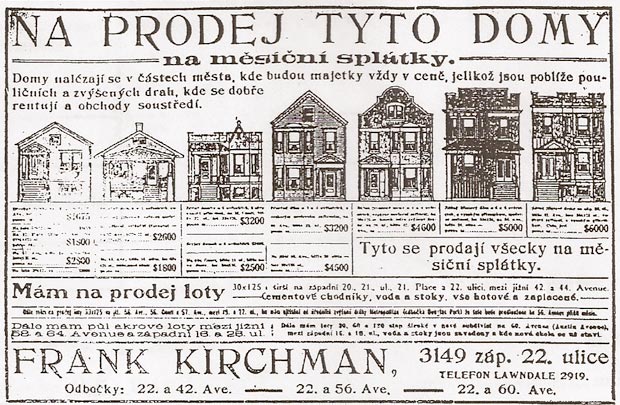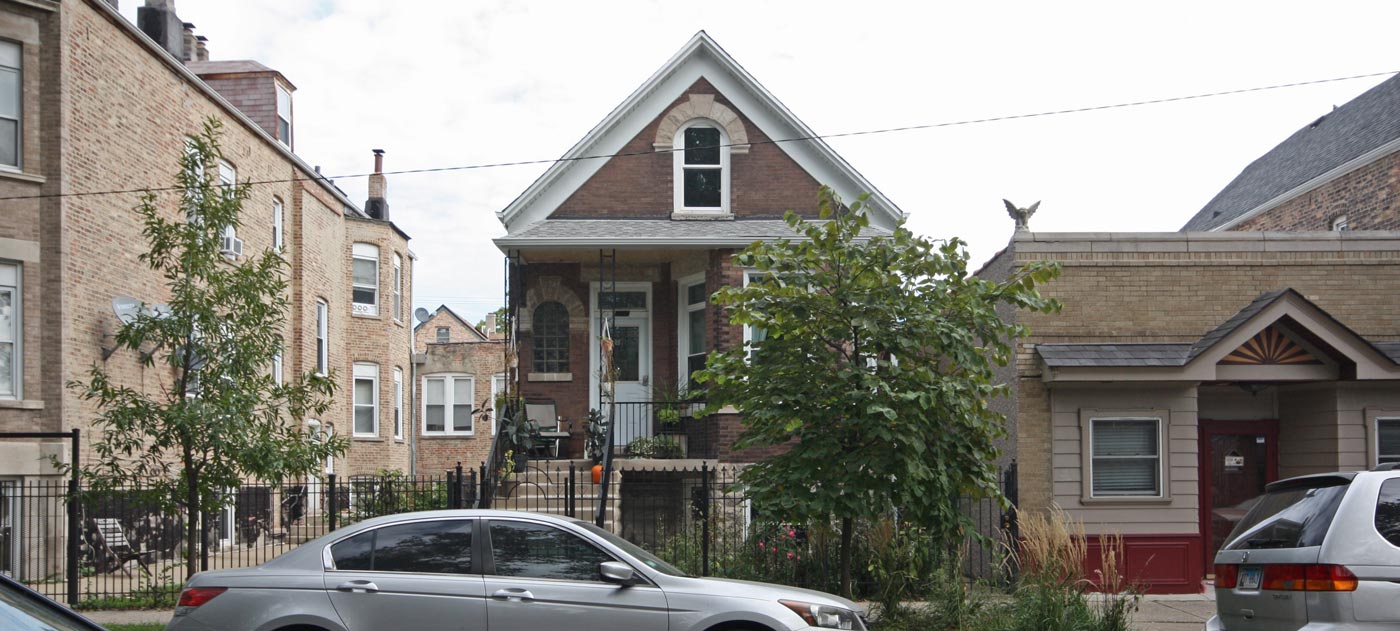
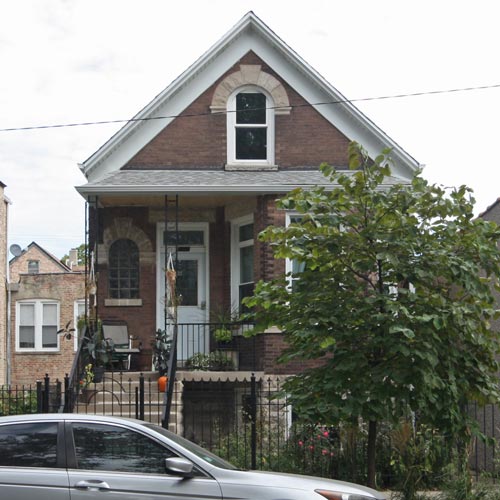
2347 S. Trumbull
Czech California
In January 1902, John J. Jankovsky and his wife Marie purchased an empty lot at what is now 2347 S. Trumbull. Three months later they filed a building permit to build a new 1-story brick cottage on the lot. The 21 by 32-foot cottage cost $1,000, a low price for a brick cottage. Jankovsky may have underestimated the building's cost on the permit, or the cottage may have originally been built more plainly than it is today.
John Jankovsky worked as a machinist while Marie cared for the new house and their young children. The photo below was taken several years after the family built the house. Eldest son John in the upper right would have been 16 when they moved in. William on the left was born just after Christmas the first year the family lived in the house. The older boys must have shared a bedroom, or slept in the attic upper level.
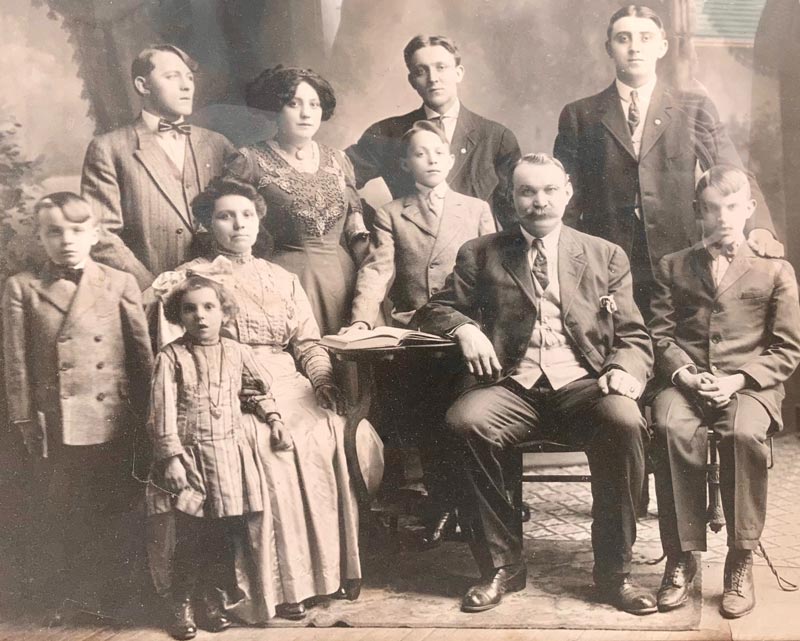
John J. Jankovsky family circa 1910. Photo courtesy John Walters.
The block was developing rapidly as families of predominantly Czech heritage moved west from the Pilsen neighborhood. Building permits for a cottage at 2337 and brick two-flat at 2351 were issued just a few days after Jankovsky's cottage. Real estate developers and residents called the new neighborhood "Česká Kalifornie", in reference to California Ave, but the name also evoked the sunny skies and wealth of that western state. A January 1906 article in the Denní Hlasatel newspaper (translated by The Czech & Slovak American Genealogy Society of Illinois) described the neighborhood:
"There, where formerly lay an expansive prairie, now are found splendid streets and business houses, such, we believe, as no city need be ashamed of, and the majority of the businesses and residences are owned by our countrymen. The immigrant movement to Bohemian California is constantly increasing and we believe the time is not far off when this quarter will be a real Bohemian California, as it is now called."
It's not recorded who the architect or builder of the new cottage at 2347 was, or the mason who laid its greystone foundation, interleaved bricks on the corners of the bay window and heavy keystone arches. A few blocks away at 3149 W. Cermak, real estate developer Frank Kirchman built and sold new homes and provided financing through the Kirchman State Bank (later renamed Western State Bank). A Czech-language advertisement from the 1910s shows a variety of house styles built by Kirchman's building company. The smallest workers cottage at left is available for $1,675.
In a speech at the October 1903 Building Association League of Illinois convention, developer and banker Frank Hajicek declared "Fifty-five of the 500 building and loan associations of Illinois are owned and managed by the Bohemians of Chicago" and that "Records of the associations show that almost 50,000 homes have been established among the Bohemians through association aid." These building and loan associations provided access to affordable housing for many working- and middle-class homeowners, though the resources were often only available to members of particular ethnic groups and reinforced ethnic segregation in many neighborhoods.
The Little Grocery
The Jankovsky family only stayed at the Trumbull street cottage for two and a half years before moving on to a two-flat seven blocks west. In August 1904 they sold the cottage to Vojtech (Americanized to "Albert") and Katherina Lorr for $3,200. The increase in the home's value from just two years earlier suggests that house had been changed or improved from its original state. The Jankovskys may have enlarged the house by raising it up and building the stone foundation underneath to create a basement level. Perhaps the stonework around the window and door were added at that time as well.
Before buying the house, Albert Lorr worked as a milk dealer or distributor from a storefront at the southwest corner of 25th Place and Francisco. By 1904 his older sons Albert and Frank were recently married and taking over the milk depot. Moving to the little cottage would have given Albert and Katherina and their younger children more space compared to the apartment above the corner storefront.
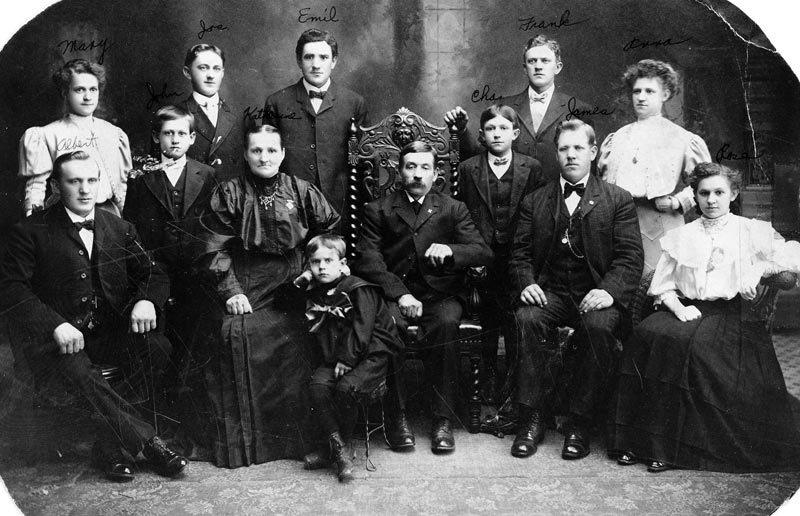
Albert & Katherina Lorr family circa 1907. Photo courtesy Karen Langer.
A month after buying the cottage at 2347, Albert and Katherine purchased the empty lot to the south at 2349. The family portrait above was taken around 1907. Not long after, Albert suffered a stroke and passed away a few months later in February 1908 at age 52. That Katherine was able to raise her youngest children and pay the bills for the cottage and empty lot next door after his death is a testament to her strength and her family's support. Katherine ran a small grocery out of the basement of the cottage, likely accessed by a door under the porch stairs.
Son Joseph married in 1910 and he and his wife Anna eventually took over running the grocery. In 1941 Joseph and Anna hired architect Joseph Emil Hosek to build a brick storefront on the lot south of the cottage at 2349 S. Trumbull. The next year, they sold the cottage and moved into the apartment behind the storefront with their six children.
In time their daughter Loretta and her husband Joseph Kotek took over the little grocery. In 1959, Loretta and Joseph's teenaged daughter Anne Marie wrote a school essay about her dad's dedication to the store, neighborhood and family, which won him "Father of the Year" at a Palmer House banquet by the Chicago Area Father's Day Council. The prize included clothes and smaller gifts and an all-expense trip to Washington DC, Joseph's first vacation away from the store in 21 years.
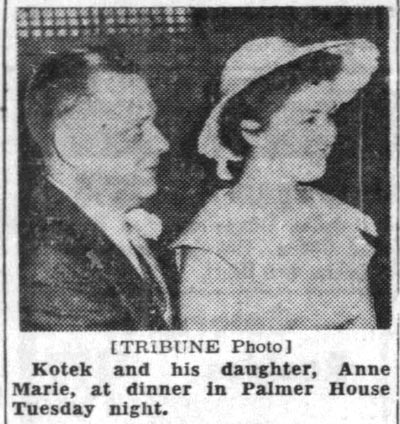
"A Father of 11 Children is '59 'Dad of the Year'", Chicago Tribune, June 17, 1959
The Bricklayer
John and Francis Hadrava had been living in an apartment above a corner store at Drake & 24th, saving to buy a house. John worked as a bricklayer for the mason Charles Tomasek, who had built many brick two-flats in the area decades earlier. After a decade of the Great Depression, Charles and his employees such as John didn't have many construction projects to work on. In the 1940 census, both Charles and John only worked about half of the weeks of the previous year. But John and Frances' economic situation must have improved in the next two years. When the cottage two blocks east of their apartment came up for sale in May 1942, they bought it from the Lorr family. Perhaps John appreciated the fine masonry on the front of the house, with its rough and smooth pattern of interlocking bricks on the corners of the bay window.
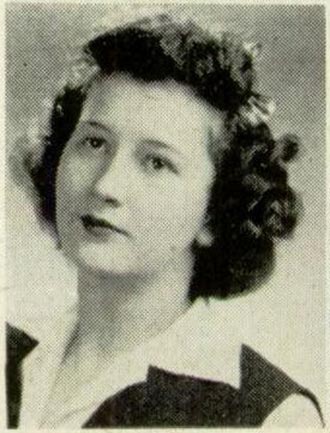
Helen Hadrava, Farragut High School yearbook photo 1944
The Hadravas had one daughter Helen who was 15 when they moved in. After finishing school she worked as a typist or secretary in an office. Helen lived on her own for a time, but never married. Eventually she would inherit the house when her parents passed away. For the next two decades she lived in the cottage with her many cats until she died at age 86 in 2012.
La Villita
In the early 1960s, many Chicago neighborhoods were undergoing traumatic changes. Urban renewal and expressway construction demolished entire neighborhoods and encouraged homebuyers and owners to move to the suburbs. The North Lawndale neighborhood just across Cermak Ave. a few blocks north experienced a dramatic turnover as African-American families moved in and white ethnic homeowners moved out. Predatory "block-buster" and contract-sales real estate agents drained investment dollars from the new homeowners, creating a neighborhood with one of the highest poverty rates in the city.
Business leaders in South Lawndale sought to differentiate the area south of Cermak with a new identity. Real estate agent Richard Dolejs is said to have come up with the new name while dining at the Little Village Restaurant at 2401 S. Pulaski in 1964. Throughout the 1960s, the 26th St. Chamber of Commerce promoted the Little Village name to stabilize occupancy in the storefronts on 26th Street. Over the next decades, many Mexican-American families moved west from Pilsen to Little Village just as Czech-American families had earlier, so that by the 1980s the neighborhood was predominantly Hispanic.
The little grocery next to the cottage was open until at least the mid 1960s. The current owners of the cottage purchased it in 2012, meaning the house has only had four owners in 120 years. Perhaps that is why so many details of the interior and exterior remain well-preserved today.
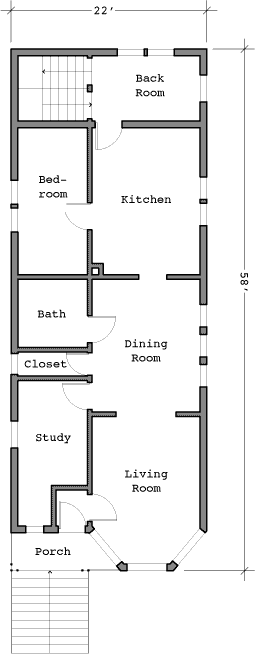
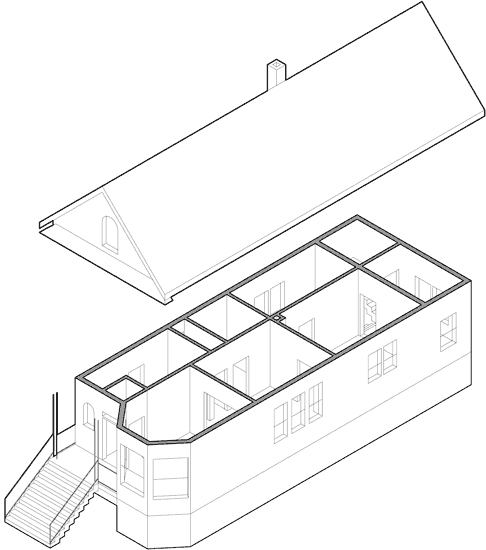
Floor plan and isometric cutaway by Jordan Vela
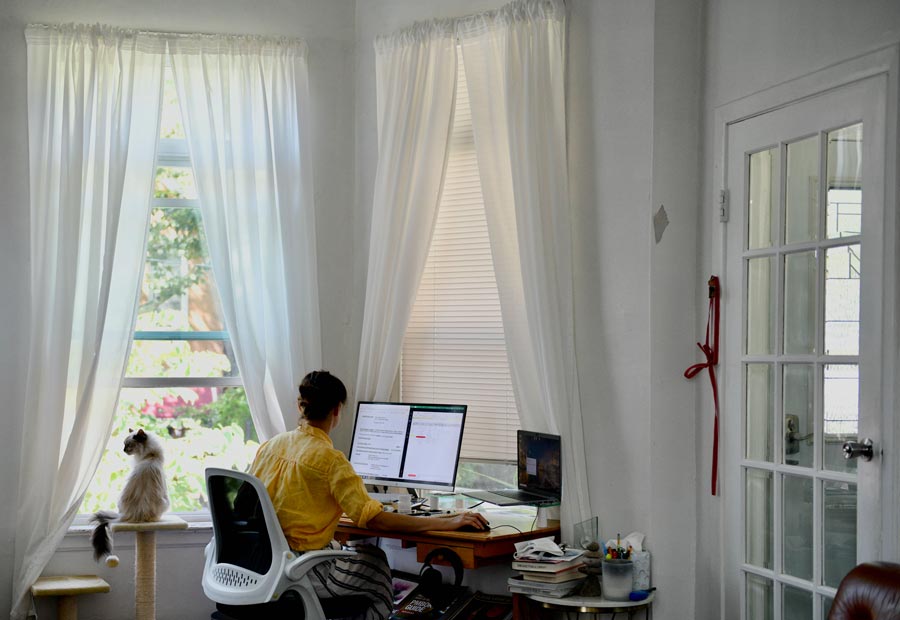
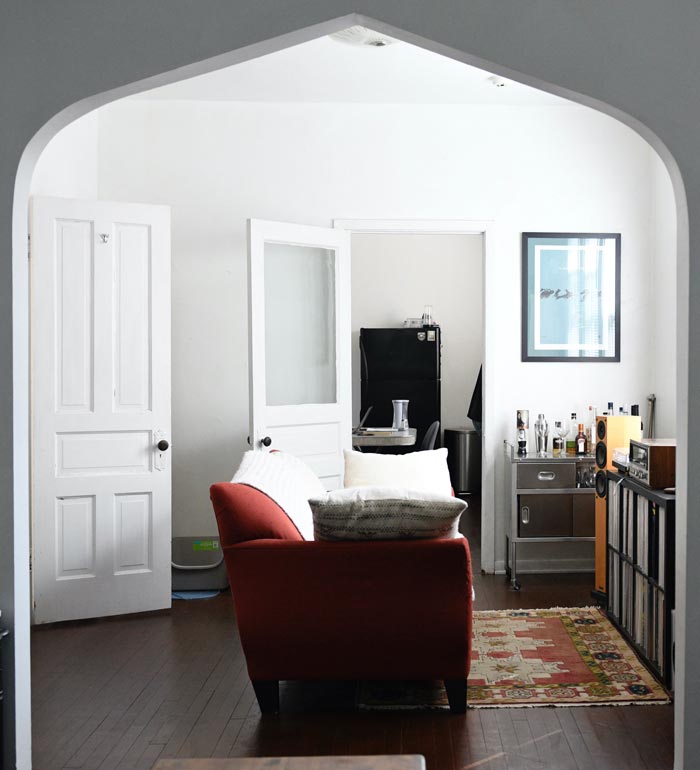
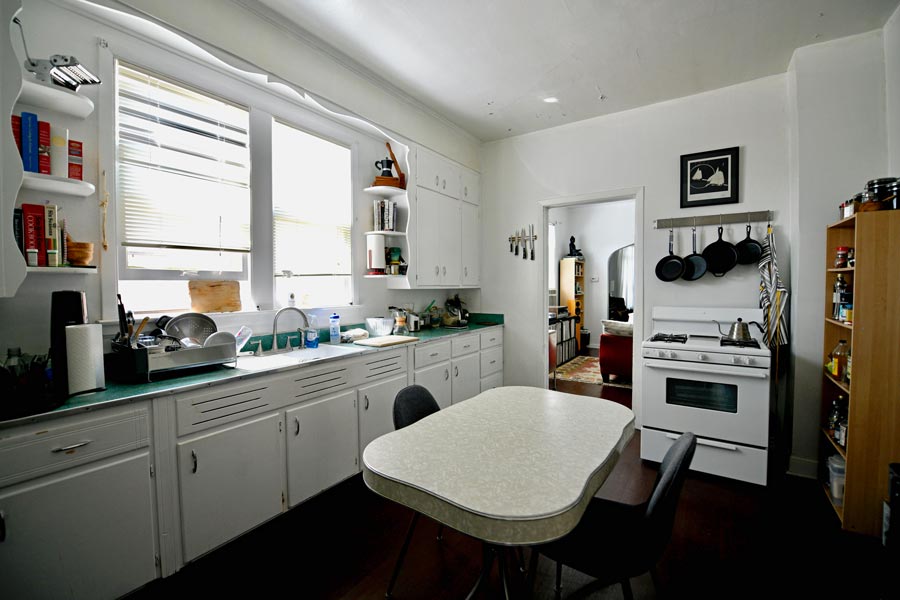
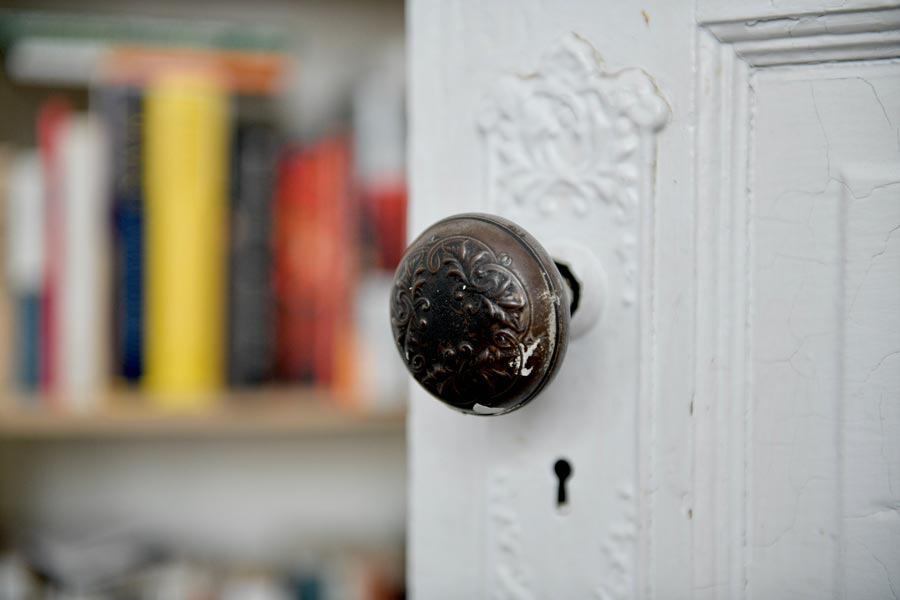
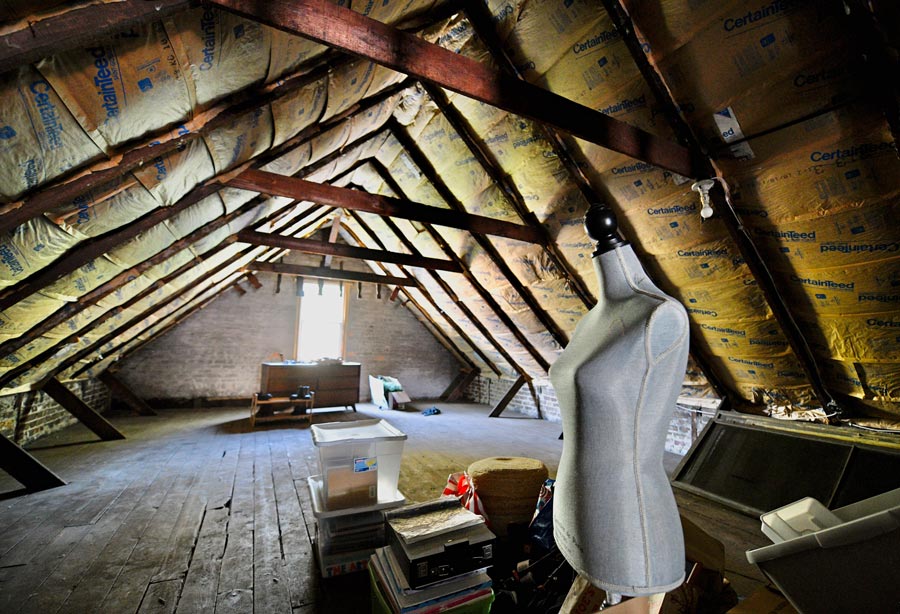
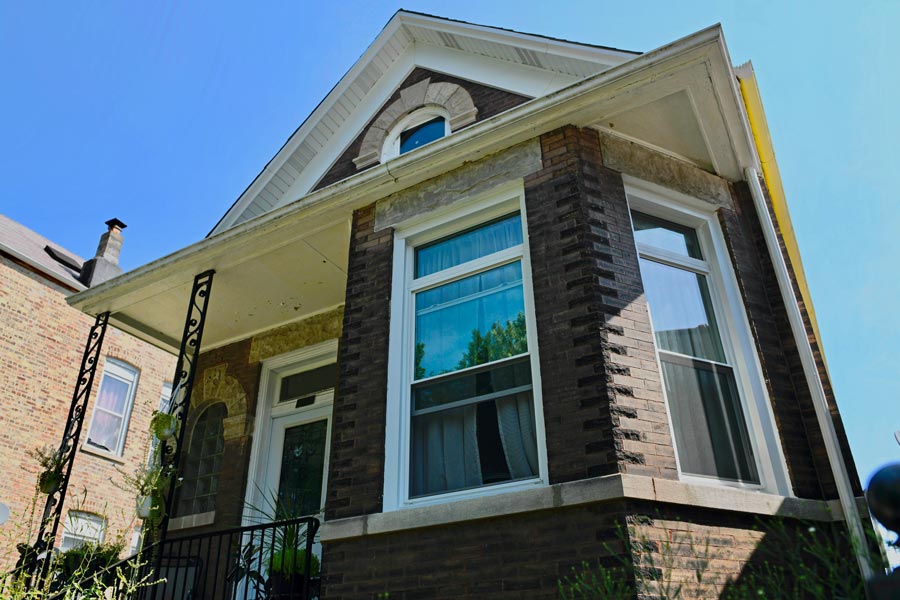
Photos by Tom Vlodek
By Matt Bergstrom
Have you found an interesting story about the history of your workers cottage? Please share with us!

